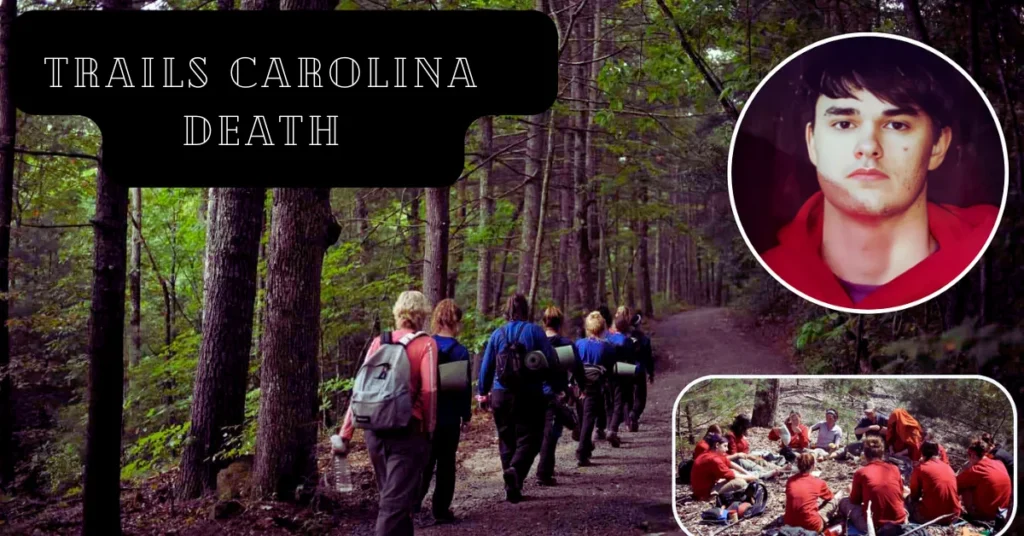Introduction to trails carolina death
Wilderness therapy programs have gained popularity as alternative treatment options for troubled teens. Among these, Trails Carolina Death has been a prominent name. However, the tragic death of a student at this facility has sparked intense scrutiny and raised critical safety concerns. As families seek healing in nature, it’s essential to examine what went wrong and how similar programs can learn from this heartbreaking incident. The path to recovery should be safe, but the shadows cast by controversies surrounding Trails Carolina reveal that achieving this goal is more complex than it seems.
The Death of a Student and Safety Concerns
The tragic death of a student at Trails Carolina has raised serious safety concerns. This incident shook the foundation of the program, leaving families and advocates questioning its practices.
Reports indicate that the student faced extreme physical challenges during their time in the wilderness therapy program. These conditions can be demanding and potentially dangerous.
Parents often trust these programs to provide care and support when they feel overwhelmed. Sadly, this tragedy highlights how quickly situations can escalate beyond control.
Safety protocols are meant to protect participants but seem inadequate in this case. The incident has ignited discussions about oversight and accountability within wilderness therapy settings.
Families deserve transparency regarding safety measures in such high-risk environments. As investigations unfold, many hope for answers that could lead to meaningful changes across similar programs.
Controversies Surrounding the Program’s Approach
Trails Carolina has faced significant scrutiny regarding its methods. Critics argue that the program’s tough-love approach can be more harmful than helpful.
The intensive outdoor experiences are designed to push students beyond their limits. However, this strategy raises questions about emotional and physical safety. Many parents expect support and nurturing—yet find a militaristic environment instead.
Some former participants have shared alarming accounts of harsh treatment. Allegations include verbal abuse and neglect during critical moments. These stories paint a picture of a system that may prioritize results over student welfare.
Advocates for change emphasize the need for trauma-informed care in wilderness therapy programs. They call for transparency and accountability, urging Trails Carolina to reassess its techniques to ensure every child’s well-being is prioritized above all else.
Response from Trails Carolina and Investigation Findings
Following the tragic incident, Trails Carolina faced intense scrutiny. The organization publicly expressed condolences to the family and emphasized its commitment to safety.
Investigators delved into the program’s protocols and practices. They sought clarity on how staff managed student health in potentially hazardous situations.
Trails Carolina conducted its internal review concurrently. Their findings highlighted areas for improvement, particularly in training staff for emergency scenarios.
The program pledged to enhance supervision ratios and improve communication among team members. Moreover, they indicated plans to update their risk management strategies.
Community responses varied widely, with some praising the swift action while others remained critical of previous safety measures. This tension underscored a broader dialogue about accountability within wilderness therapy programs as they navigate these complex challenges.
Similar Incidents in Other Wilderness Therapy Programs
Wilderness therapy programs have faced scrutiny beyond Trails Carolina. Similar incidents raise alarms about participant safety across the industry.
In recent years, reports of injuries and fatalities in various wilderness programs emerged. Some cases involved inadequate supervision or extreme conditions that participants were ill-prepared to handle.
Each incident highlights a troubling trend. The high-risk nature of these environments can lead to dangerous situations for vulnerable youth. Parents often trust these institutions with their children’s well-being, expecting professional care and guidance.
Despite best intentions, some programs fall short in training staff adequately or maintaining safety protocols. This negligence could result in severe consequences for both students and staff alike.
As discussions continue around these tragedies, the need for reform becomes increasingly urgent. Ensuring student welfare must be at the forefront of every program’s mission moving forward.
Ensuring Safety in Wilderness Therapy Programs
Safety in wilderness therapy programs is paramount. Participants often face physical and emotional challenges that require careful management.
Implementing rigorous training for staff ensures they are equipped to handle emergencies. These professionals must be adept at first aid, crisis intervention, and risk assessment.
Regular audits of the program’s protocols can also enhance safety measures. Reviewing procedures helps identify potential hazards before they escalate into serious issues.
Additionally, open communication between parents, participants, and staff fosters a supportive environment. When everyone feels comfortable voicing concerns or suggestions, it creates a culture of accountability.
Incorporating feedback from former participants can provide valuable insights for improvement. Their experiences may highlight overlooked areas that need attention or adjustment for better safety outcomes.
Conclusion: Lessons Learned and Moving Forward
The tragic event surrounding Trails Carolina has sparked a broader dialogue about safety in wilderness therapy programs. As parents seek effective treatment options for their struggling children, it’s crucial to consider the risks involved. The death of a student highlights the urgent need for comprehensive safety protocols and transparency within these programs.
As we reflect on this incident, it’s clear that all parties must take responsibility. Programs like Trails Carolina should prioritize rigorous training for staff and adhere to strict safety guidelines. Moreover, prospective families deserve full disclosure of any past incidents or controversies that might affect their decisions.
Learning from such tragedies is imperative for the evolution of wilderness therapy as a whole. By fostering open communication and implementing enhanced safety measures, stakeholders can work together to create an environment where healing can occur without compromising well-being.
The journey toward safer practices in wilderness therapy remains ongoing, but with collective effort and vigilance, positive change is possible.
FAQs
What is “Trails Carolina Death”?
Trails Carolina Death” refers to a tragic incident involving the death of a student in the wilderness therapy program at Trails Carolina, which has raised serious safety and scrutiny concerns.
What caused the death at Trails Carolina?
The death at Trails Carolina was attributed to extreme conditions and challenges faced by the student, highlighting potential inadequacies in the program’s safety protocols and emergency procedures.
How has Trails Carolina responded to the incident?
Trails Carolina has expressed condolences and committed to reviewing and improving their safety measures, including enhancing staff training and risk management protocols.
Are there similar incidents in other wilderness therapy programs?
Yes, similar incidents have occurred in other wilderness therapy programs, raising concerns about the overall safety and effectiveness of such treatment options.
What steps are being taken to ensure safety in wilderness therapy?
To ensure safety, programs are focusing on rigorous staff training, regular protocol audits, open communication with parents, and incorporating feedback from former participants to prevent future incidents.







